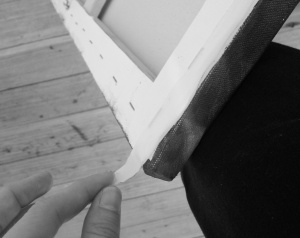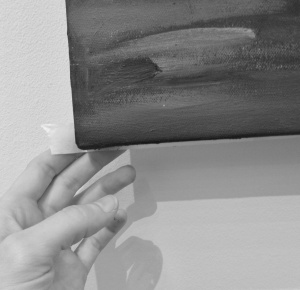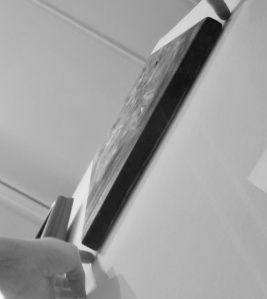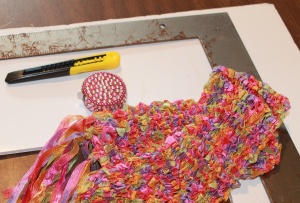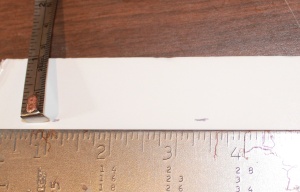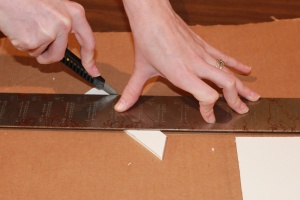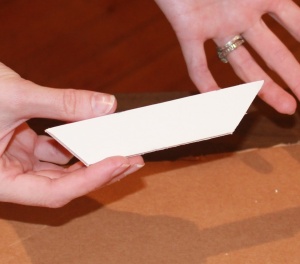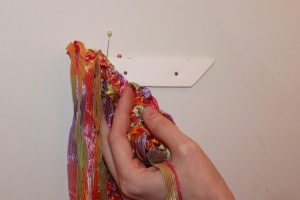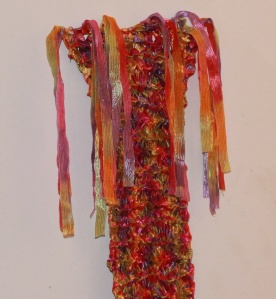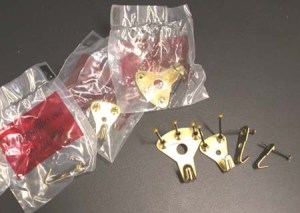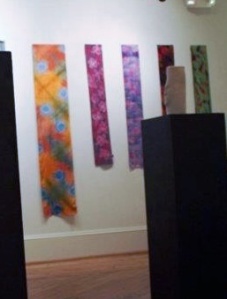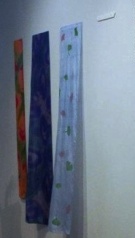This has happened, several times, during my tenure as curator. No one likes it, because of the obvious issues involved in hanging wet work–they can get smudged, smooshed, and lead to smears across the wall.
One, you must be very careful in handling the piece (duh!). The best advice, of course, is to leave it out of the show. However, if you must add it, then you must, and I’ve created one way to hang it without wet paint marring the wall.
Note: these pictures are in b&w to hide the identity of the artist.
Step One: Identify the problem area.
Is it just the front? The sides? Or does the paint overlap the sides and continue onto the back?
Here, I’ve identified the problem area on the back

…as seen by using this highly technical method. (I recommend only using this method for the back of the painting–NEVER for the front)
Be sure to wash hands thoroughly before identifying other problem areas.
Step Two: ‘Fixing’ the Problem
To fix the problem, I’ve used masking tape (painters tape will work). Lightly apply the tape along the edge of the wet painting. Obviously, the bottom portion of the painting was the issue–the top was dry.
Be sure to leave a ‘tab’ of masking tape on each side.
Step Three: Now You’re Ready to Hang
Now the work can lay safely against the wall without repainting the space behind it. Using the tabs, you can slide the work to center it.
Step Four: DON’T FORGET TO REMOVE THE TAPE!
Here, I’ve attached a useful note to myself to remove the tape before the opening. When removing tape, just pull straight down from the tabs with slow, steady pressure.
*Ms. Wakefield almost never delivers wet paintings to shows…

